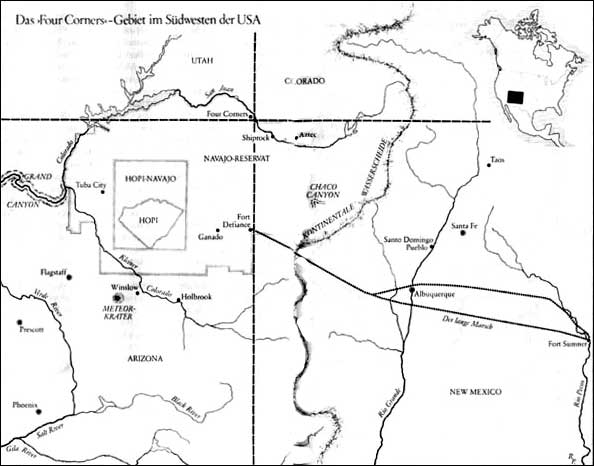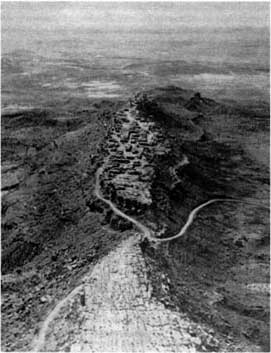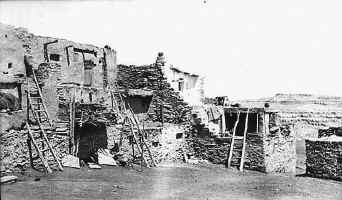The Hopi tribal area is located in the southwest of the USA, in the northwestern part of Arizona. After "8o.ooo years of migration" (archaeological evidence of this extensive migration can be found in many places of the USA), the Hopi settled in this tribal area about 1100 years ago. In 1882, the American. Government set up a hopire reserve. The existing community land was divided between individual families. The surplus land was then allocated to the Navajo Reserve. Today's Hopi Reserve is about 40 square miles in size in the middle of the Navajo Reserve, which has repeatedly led to unrest and problems between these two tribes.

The villages of the Hopi are located in the area of the so-called "3 Mesas" ("Mesa" is the name of the steep cliffs on which most of the villages of the Hopi are located), between the rivers Colorado, Little Colorado and Rio Grande. The most important villages are Hotevilla, Walpi and Alt-Oraibi, the latter being the oldest permanently inhabited place in America with a continuous settlement time of over 1,000 years.

The houses of the Hopi consist of stones and clay and are mostly very nested and built into the rock formations. Thus they do not attract the superficial observer's attention at first and give the impression that they are mainly natural caves that are used for living purposes. As a result, the living spaces appear very natural and offer a lot of space for many people on a small footprint due to their nesting. Here, too, we find the principle, if possible in a simple form, as little as possible alienated and destructive to integrate into the conditions of nature and the prevailing living conditions.




